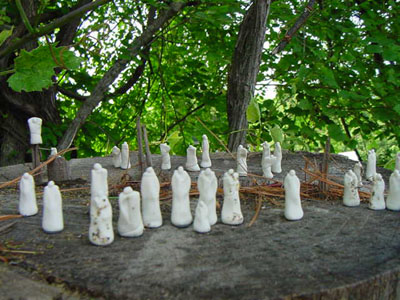When kiln-fired to temperatures
in excess of 2200 F, the saggar creates a closed atmosphere for that particular
dirt sample, and the chemicals in the dirt volatize in the heat. As this happens,
the porcelain body fluxes enough to act as a sponge for the gasses in the
saggar, which in turn changes the appearance of the porcelain from white to
an array of other colors, depending on what chemicals the dirt contained.

